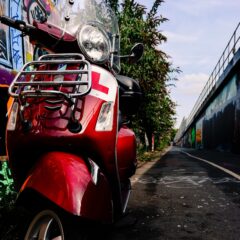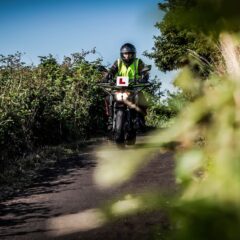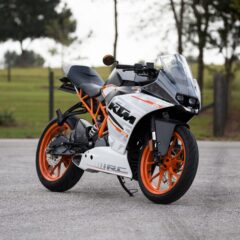
7 Top Motorcycle Accessories
With Christmas just around the corner, you might be wondering what to get your favourite motorcycle enthusiast or even a little something for yoursel...
 Phoenix Motorcycle Training LTD
Phoenix Motorcycle Training LTD
 Phoenix Motorcycle Training LTD
Phoenix Motorcycle Training LTD

Deciding to learn how to ride a motorcycle and becoming licenced to ride on UK roads is an exciting step that will lead you to take a CBT course. CBT simply stands for Compulsory Basic Training. Once you’ve taken this and become certified, you’ll have learned the basic motorcycling skills needed to ride on the road.
You won’t have a full motorcycle licence, you’ll need to ride with ‘L’ plates displayed on any machine up to 125cc and there will be one or two other restrictions in play. It is the first step everyone needs to take to get a motorcycle licence. Read on for more details and some tips on how to complete your CBT on your first try.
There is no test at the end of the CBT course. That doesn’t mean it’s as simple as attending a CBT training day. You can’t daydream your way through the course and collect your certification at the end. Your instructor must be confident that you have grasped all of the basics. When they are, they’ll be able to sign the CBT DL 196 certificate and hand it over. If you don’t reach the required standard, you’ll need to keep training.
CBT courses usually last around a day, roughly six or seven hours. Throughout this time, you’ll learn all of the basics needed to continue your motorcycle riding practice on UK roads. It’s a gradual process that starts with all the basics and ends with you riding on the road. Your instructor will be close behind and in radio contact at all times. There’s nothing to worry about. Your motorcycle training instructor will be constantly assessing your progress. They’ll make sure you’re ready to safely make the next step in the CBT course.
Once you have your CBT certificate, you’ll be able to ride on the road. This lets you gain further motorcycling experience over the following two years. If you decide not to make the next step to an AM or higher motorcycle licence type within that period, you’ll need to get re-certified for your CBT after those two years have passed.
Riding with just a CBT certificate means you have to display learner plates. These need to go at the front and rear of your motorbike or scooter. There are other restrictions too. You’re not allowed to take a pillion passenger, ride on the motorway or ride a motorbike or scooter more powerful than the 50cc – 125cc range.
Even though there is no test involved in the CBT, you need to reach a basic rider standard. You need to become confident and competent to get your certification.
One of the best ways to make sure you complete your CBT first time is to choose a school that has supportive and friendly instructors. A shouty, drill sergeant type of instructor won’t do your nerves any good, and being nervous can make the training harder.
“It’s a good idea to do your homework before you book a CBT course. That means reading through the Highway Code and choosing the training school where you plan to take the course carefully.”
Mark Jaffe, Owner of Phoenix Motorcycle Training
It’s important to choose a school that you’re confident can teach you how to ride safely; rather than one that’s focused on pushing you through as fast as they can.
To get the most from learning to ride and improve your chances of becoming certified, pay attention to your instructor. It also helps to ask questions throughout. This will help you understand the lessons, and most of all, enjoy the process without pressuring yourself.
Riding a motorcycle should be fun. Great CBT instructors make the courses enjoyable learning experiences. Doing this gives students the confidence to become competent riders who can build their skills with each solo ride.
Phoenix has an excellent reputation for motorcycle courses for all levels of experience. Our great first-time pass rate is based on the small training groups. And our ability to tailor each course to our student’s needs. Begin your motorcycle career with Phoenix Motorcycle Training and book a CBT course today.

With Christmas just around the corner, you might be wondering what to get your favourite motorcycle enthusiast or even a little something for yoursel...

If you love motorcycle riding, you’ve probably daydreamed about riding a motorbike for a living. A professional racer or stunt rider is OK for some...

Getting a UK motorcycle licence can seem a complicated process. Particularly when compared to a driving licence for a car. Whether you choose the pro...
This website uses cookies to personalise content, ads, and analyse traffic, sharing data with partners who may combine it with other information. See our Privacy Policy for more information.